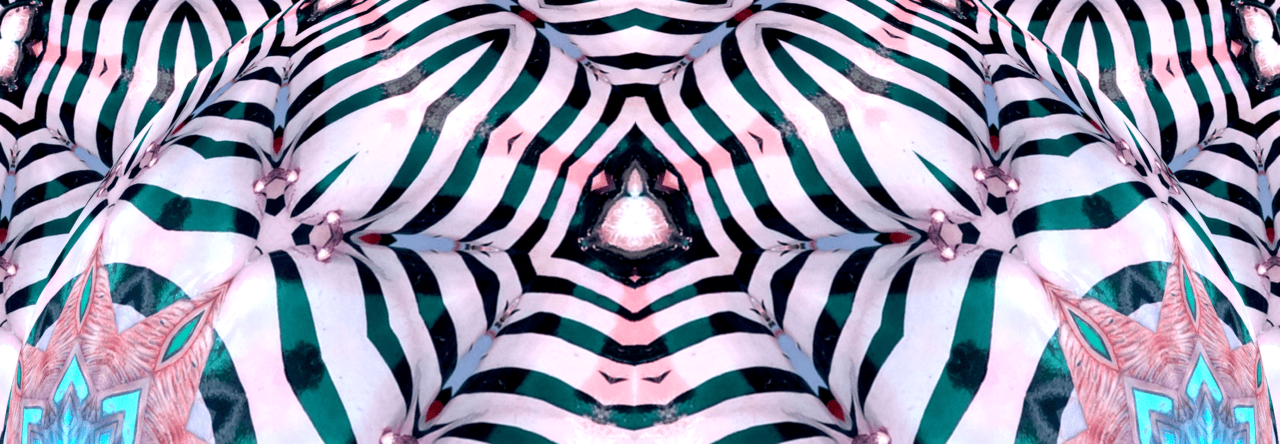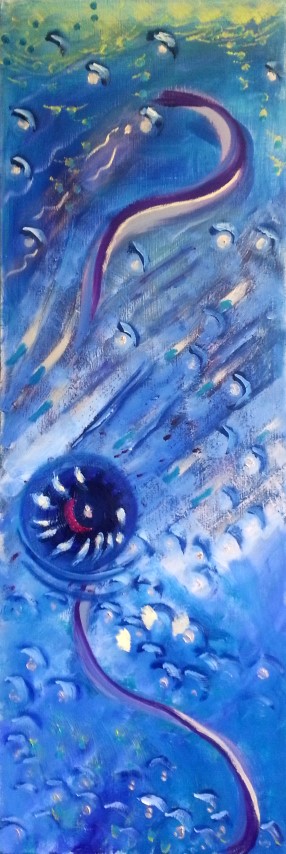This is an oil painting on MDF (medium-density fibreboard) rather than canvas. With several coats of gesso (a gluey-white paint mixture), it provides a very fine, smooth surface over which paint glides quite easily, which in this case made it easier for me to achieve the ribbon-like and underwater effects. It measures 102 x 35 cm.
Though I didn’t set out to do it, now that this is finished, it reminds me of the Nazar or “evil eye” amulet one often finds in Turkey or Greece. These amulets are believed to reflect the ill-intentions of others, protecting the person or household from which the eye looks out, seeing all. Though they can be found in different colors, I’ve always loved that deep cobalt shade of blue one traditionally expects.
One can scarcely tell for certain whether this charm is being pushed up from the bottom of the ocean floor by some force or wave, or whether it is floating to the bottom where it will lay buried in sand for all eternity. Either way, I hope that it may serve the same purpose as the Nazar, warding off evil and acting as a lucky charm wherever it hangs.



